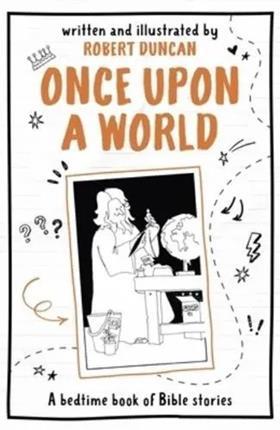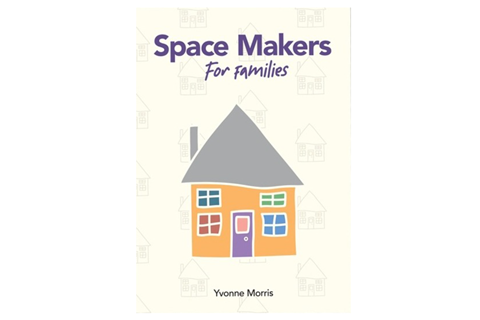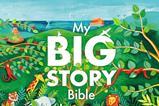
Once Upon a World: A bedtime book of Bible stories
Robert Duncan (SPCK)
If you were brought up in a Christian home, you probably first heard the major stories of the Bible from a shortened, picture-book version. Robert Duncan has written a paperback book of 50 stories which has black and white images alongside his retelling and takes you from creation to the resurrection. The book is aimed at children of primary age who will eventually be able to read it for themselves.
Understandably, the selection reflects the fun and dramatic stories including Noah, Joseph, Moses, Jericho and three from Samson. There’s nothing on Abraham or any hint of the Exile – which may be understandable, but you will have to get your Bible overview from elsewhere. We have some miracles and stories of Jesus and finish with his death and resurrection.
The stories are beautifully and succinctly told, combining gentle humour and sanitised appropriately where necessary. Each story would take around ten minutes to read and I can imagine most children not wanting to stop at one.
Would make an ideal book as a gift at a christening or dedication and if you have a library of children’s books at church, this would be a delightful addition to the collection.

Oh How Loved You Are: A journey to adoption
Jacqui Hutchinson
This beautifully illustrated book fills an important niche in the market. As a parent of adopted children myself I appreciate what Jacqui Hutchinson is doing in writing specifically for a child at a foster home about to be adopted.
As a foster carer herself, the author knows the powerful role the carer plays in bridging the pain of separation from the birth parent to the ‘forever family’ and all that this can throw up for the child who forms an appropriate attachment to the foster carer, but must then form a new and lasting bond with the new parents.
The book focuses on the heart dimension of this as it weaves the classic narrative of tummy mummy, social worker, safe foster home, feeling the ups and downs and then onto the forever family, telling the story to the child through a series of poems and pictures. My boys (now 19 and 20 appreciated what the author was doing).
This won’t be for many children, of course, but those who need it, really need it and with few books of this kind around it is to be hoped that this gets into the right hands. Although soaked in Christian love, this is for children of any or no faith, and so doesn’t reference God or faith directly. There are other times and other books for that.

Space Makers for Families
Yvonne Morris
The Diocese of Oxford has produced a guide for families keen to help children engage with various spiritual practices from the Christian contemplative tradition – practices which interestingly are recommended for young people battling with stress and anxiety.
This colourful guide gives you all you need to run through each of the exercises: stilling, noticing, dwelling, mending, filling, blessing and marking. The book is designed for you to guide a child or young person, specifically at home, but could equally be as part of a children or youth group.
The explanations are gently and warmly communicated, aware that this may be new for some, and urging participants to move at their own pace and give the time and energy they have to it. I would guess the session would require at least half an hour.
The establishment of the regular practices is enhanced by a table top book: a small calendar like spiral bound series of images for each of the practices which could be placed in a home or classroom as an aide memoir, with next image prominently displayed.

God’s Cosmic Cookbook: Your complete guide to making a universe
Elizabeth Cole (Hodder Faith)
On the first page God is a bearded black chef who introduces the reader to his description of how to make a universe like you would bake a cake in cookery class, with the help of his two friends: Martha and Theo (First Lord of Ffysics).
This cartoon-style book of 187 pages outlines the latest scientific theory in some detail, depicting the various theories of universe creation in a chatty humorous style that explores the immensity and complexity of the process and the order that scientists believe was necessary: step one, step two etc. It assumes that God uses evolutionary processes, and he as the author of the book, describes how you would ‘do it’.
It’s a beautifully illustrated book, the graphics outline the science, and what is created as we go, and the language is accessible for late primary and early teens, though the science is a tad more complex.
It’s a clever idea, and I really wanted to like it more than I did. I suspect that the audience is twofold – those with no faith at all for whom the idea of God’s involvement at all is a novelty and children from church who wonder how science and God connect. This meant there is little that directly connects with the Bible as such – aside from some verses at the end. I wonder if that more could have been incorporated without the excellent science being lost?

































